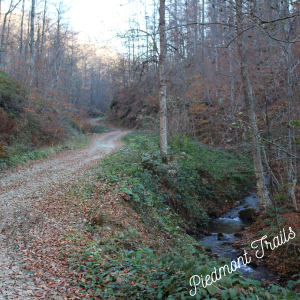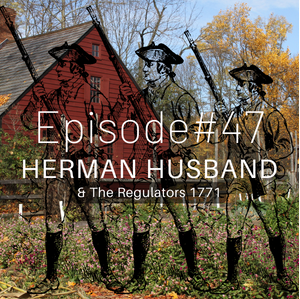Thigpen’s Trace dates to Queen Anne’s War from 1702-1713. To summarize the actions of this war, various battles occurred between Spanish-owned Florida and English-owned Carolina by 1701. The colonists in the Carolina Province also participated in military behavior with the French-owned Fort Louis located in present-day Mobile, Alabama. England established a flourishing trade economy along the eastern seashore during the 17th century. The arrival of the French threatened the boundaries of the English colonists and hampered trade techniques in the first years of the 18th century. The addition of Spanish forts in Florida also threatened the English boundaries and trading techniques in the southern areas. Trade was the leading factor for all parties involved, and land control would seal the fate for the future. The war allowed England to create the Georgia Province by 1732 and control trade and land along the eastern seashore. Conflicts would continue between the northern colonies and the French, which later resulted in the French and Indian War, also known as the Seven Years’ War.
In any war, communications, equipment, soldiers, and a plan for success are principal elements to achieve victory. The Province of Carolina held inhabitants in the sandhill and coastal areas in 1702. James Thigpen Sr. was among these occupants. Born in Shannon, Ireland, circa 1627, Thigpen arrived in Carolina in 1652. He purchased land, circa 1664, from the chief of the Yeopim tribe along the Perquiman River and named his new home Shannon. Thigpen arrived in Carolina with his wife, Elyn, and other members of her family. The first documented child born to the couple dates to 1653, a son named Travis. Following Irish naming patterns of the period, we believe Travis to be the second son born to the couple. Customs of the era named first-born sons after the father’s father and second sons named after the mother’s father or maiden name. Elyn Fetzpen is the daughter of Travis (Travese) Fetzpen and a cousin of James Thigpen Sr. The young couple continued to live in the North Carolina area and had at least 12 children. Captain James Thigpen Jr was born in 1664 and played a pivotal role during Queen Anne’s War.

According to colonial records, James Thigpen Jr., named as the primary overseer of all roads in the province of North Carolina, is mentioned in the court records of the Perquiman precinct in January 1704. James Anderson presents Thigpen to the court, and the proceedings give Thigpen all authority needed for future road construction. By April of the same year, Thigpen notified the court of a new road leading from his ferry along the Perquiman River to the High Road. Thigpen sold his ferry business to Annie Wilson in 1715. James Thigpen offered his home for court proceedings in 1706, and the August term documents this as fact. The records document James Thigpen often in court, from lawsuits to road petitions. His arrest, on November 30, 1694, and the court records reveal that he supposedly owed two thousand pounds of tobacco to John Keedon of Virginia.
North Carolina Militia shows Thigpen as a Captain in 1695. In 1702, Major James Thigpen appeared in the records. During the year 1702, he became active with the trading routes in North Carolina. His scouting expeditions allowed him to visit the piedmont area, foothills, and western mountains. By 1709, James became familiar with present-day North Carolina, South Carolina, northern Florida, Georgia, Alabama, and Mississippi. Speculations continue his travels into present-day Louisiana. It stands to reason why Major Thigpen would oversee the development of a road leading across the Province of Carolina in 1709. Some believe that the origins of the road began in 1703. We believe this may be true leading into the northern sections of Florida. The goal of the road was to provide adequate transportation routes into enemy territory during Queen Anne’s War. We know of one battle that took place at Santa Fe de Toloca in May 1702, and this proves that NC Militia traveled to present-day Florida during that period. So, a road leading into this area would be worth exploring. By 1709, the road leading from Carolina Province traveled southwest to South Carolina and Georgia. The wagon road became known as Thigpen’s Trace and Thigpen’s Trail. By the 1730 decade, the popular name for the route became known as the Trader’s Path in the Carolinas. For Georgia, Thigpen’s Trace remained popular for years. At least two early communities, named Thigpen, were near the road, one near Vienna and another near Sylvester. We believe the Trader’s Path, alias Thigpen’s Trace, crossed over the original Keowee Trail in South Carolina and entered present-day Georgia near Augusta.
We believe if research material is readily available to prove the original route of Thigpen’s Trace, we would be able to document the first wagon road in North Carolina. As we continue our final preparations on the Great Wagon Road Project, we look forward to the future and the adventures that await us. Enjoy Your Journey to the Past!
Sources:
- Colonial Records of North Carolina Minutes of the Perquimans Precinct Court January 11th to 12th, 1704 Volume I pp. 604-606. April 11th, 1704, Volume I pp. 607-609 August 1706 Volume I pp. 652-653
- Crane, Verner The Southern Frontier in Queen Anne’s War published by Brown University 1919
- Mitchell, John 1755 Map of British & French Dominions in North America
- Nairne, Thomas 1711 Map of South Carolina
- North Carolina Court Records November 30, 1694, Volume I pp. 423-438
- Saunders, William Laurence The Colonial Records of North Carolina published by P.M. Hale, Printer of the State, Raleigh, NC 1886 pp. 388, 411, 415, 432, 433, 532, 534, 609, 623
- Thigpen, C. & Smith, Alice Wheatly The Thigpen Tribe 1963 pp. 10, 17
Categories: 18th Century Roads, Alabama, Featured Articles, Florida, Georgia, Mississippi, North Carolina, South Carolina











I need to read up on the other roads you have been working on with the Great Wagon Road project. My Smith ancestors after leaving North Carolina lived in Alabama for a brief period before migrating to Texas and Louisiana. This is fascinating stuff!!!
LikeLiked by 1 person
Thanks blake6208 for your kind words. We find these colonial roads fascinating too. Their history can give us so many clues about our ancestors. Enjoy Your Journey to the Past!
LikeLike